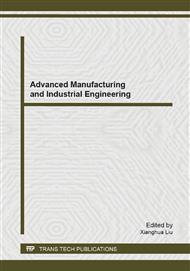p.849
p.853
p.857
p.863
p.870
p.874
p.879
p.884
p.888
A New Classification Method for Stored Grain Insect Infestation Using KIII and SVM Based Electronic Nose
Abstract:
Insect infestation is a common problem for stored grain. In this paper, a novel pattern recognition approach combining an olfactory neural network entitled KIII with support vector machine (SVM) is proposed and used in conjunction with an electronic nose to generate recognition models. Using this approach, feature vectors are firstly processed by KIII model which stimulates information processing function of olfactory bulb, and then classified by SVM. Through optimization of SVM model parameters, the data are mapped into high dimension space and the stored wheat samples with different degrees of insect damage are distinguished successfully. The experimental results demonstrate that the proposed method can achieve up to 100% classification rate and significantly outperforms the conventional KIII-Minimum Euclidean Distance Classifier.
Info:
Periodical:
Pages:
870-873
Citation:
Online since:
August 2014
Authors:
Price:
Сopyright:
© 2014 Trans Tech Publications Ltd. All Rights Reserved
Share:
Citation:


